Did you know your cars
brake fluid needs changing every 2 years? New cars, still under the main dealer service schedule will, generally speaking get their brake fluid changed at regular scheduled intervals. However, as cars get older it's more likely that the frequency of brake fluid changes will decrease. Now that's not to say that independent garages and DIYers aren't doing their job properly, far from it. The reason being, generally speaking again, is that independent garages and DIYers only carry out the work that their customers
ask them to carry out and most customers probably don't realise that brake fluid does need changing so regularly - if at all. So it might be something worth inquiring about the next time your car is getting serviced.
We wanted to change the brake fluid on our 10 year old Golf GTi for two reasons: One, we've no idea when it was last changed and two, we want to use racing brake fluid which has a much higher boiling point as we intend to use our car on the race track as well as the road.
Check out the video below
…or if you prefer to take your time, read our step-by-step guide:
What do you need?
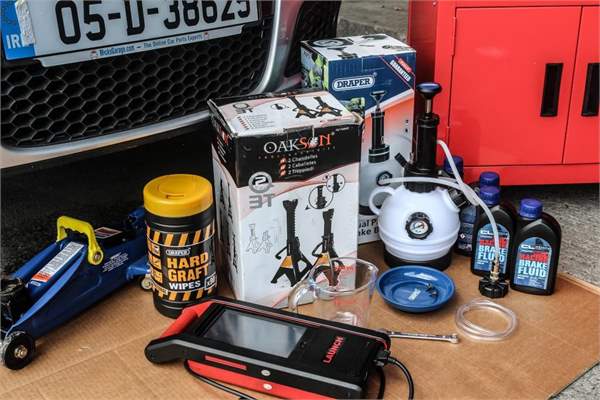 How long will it take?
How long will it take?
As always it will depend on whether you have all the equipment you need and will vary depending on experience and whether you're using a lift or axle stands but bank on 2-3 hours if you're replacing the brake fluid entirely or perhaps as little as an hour if you're just bleeding the brakes.
Safety First
It's important to note that the procedure for bleeding brakes can vary from car to car and on such a safety critical job it's imperative that you follow the correct procedure for your vehicle. If you're doing the job for the first time make sure you have a professional with you to show you the ropes. The following methodology relates specifically to the 2004 - 2009 mk5 VW Golf GTi and other models in the VAG range that use the PQ35 platform such as Golf Mk5, 8P A3/S3, TT Mk2, Leon Mk2, Octavia Mk2, Passat B6 and Touran.
Step 1
We took all the wheels off and supported the car on axle stands for better access to the caliper bleed valves, but it isn't essential, depending on access you may be able to bleed your brakes with the car on the ground, on its wheels. Remember, if you are lifting the car up, always support it securely with
axle stands and NEVER get underneath a car supported by a jack.
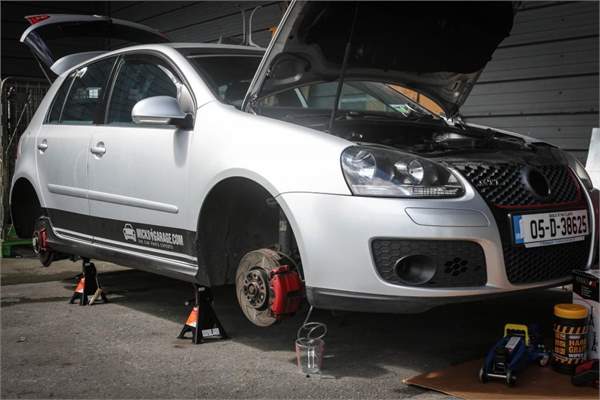 Step 2
Step 2
Fill the brake bleeder with 1.5 litres of new
brake fluid ensuring it is of the correct grade (our car requires DOT4 fluid) Make sure you use new, unopened fluid with an unbroken seal. Once a bottle of brake fluid has been opened and the seal broken it will start to absorb water from the air and will become less effective. With the handbrake off, connect the brake bleeder reservoir cap to the fluid reservoir on the car and pressurize the bleeder to about 10psi (higher pressure could damage some of the internal seals in the master cylinder so keep an eye on the pressure gauge)
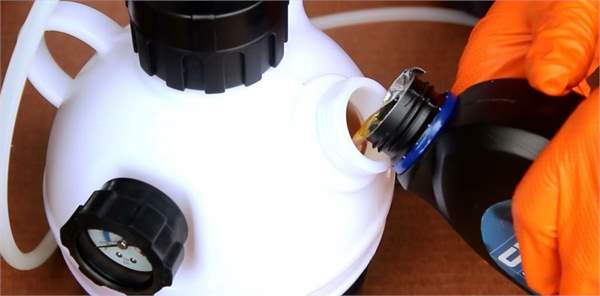
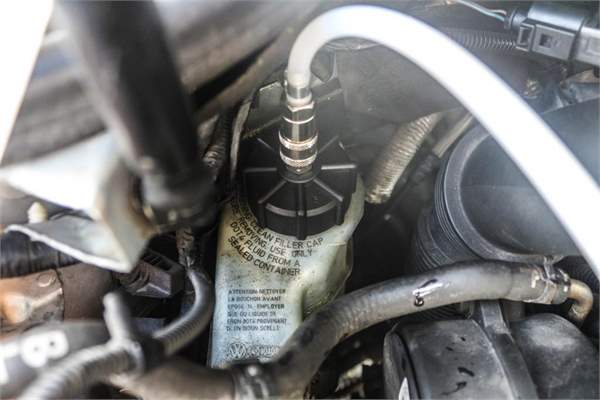 Step 3
Step 3
Unlike conventional brake bleeding procedure, where you start at the caliper furthest away from the master cylinder, on the mk5 Golf you start at the front left caliper. Remove the rubber dust cap from the bleed nipple, ensure the area is clean and put your 11mm ring spanner on before you connect the clear flexible hose. Put the other end of the hose into a clear container/jar. Undo the bleed nipple until brake fluid starts to flow (don't remove the bleed nipple completely, you only need to undo it half a turn or so).
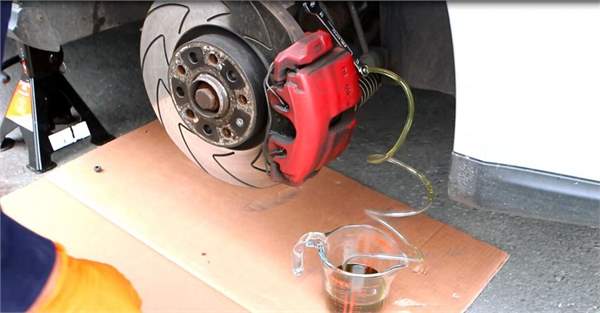
You need to extract at least 200ml of fluid from this caliper. If the fluid you're changing is old you may be able to see the colour change. The old fluid will be darker than the new. Using an old measuring jug to collect the old fluid will help you gauge how much fluid you've extracted, which will be especially useful if there isn't much colour difference between the new and old fluid. once you've extracted at least 200ml and fluid is running clear and free from bubbles tighten up the bleed nipple.
Step 4
Repeat the procedure on the front right caliper, ensuring there is sufficient fluid in the brake bleeder and that the pressure is being maintained at 10psi, you may need to pump it up a few times throughout the process. Again you need to extract a minimum of 200ml of fluid.
Step 5
Repeat the procedure on the rear left caliper, then rear right caliper, this time extracting at least 300ml of fluid from each side.
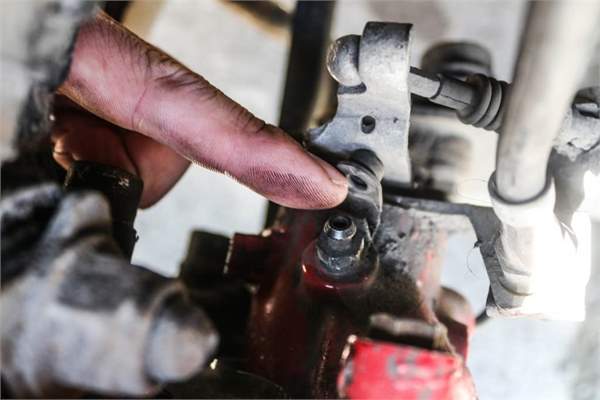 Step 6
Step 6
The clutch and brakes run off the same system so you need to bleed the clutch as well.
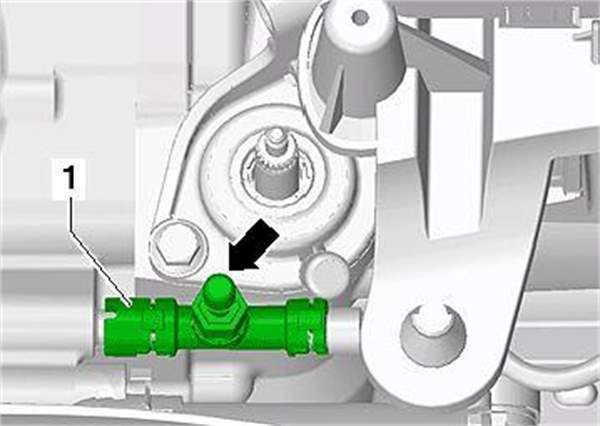
To get access to the clutch slave cylinder you'll need to remove the plastic engine cover.
- Push the bleeder hose onto bleed nipple on the clutch slave cylinder
- Open the bleed nipple and allow approx. 50 ml of brake fluid to flow out.
- Close bleed nipple and depress clutch pedal 10 to 15 times quickly in succession.
- Open bleed nipple again and allow approx. 50 ml of brake fluid to flow out.
- Close bleed nipple, remove bleeder hose and depress clutch pedal several times.
- Re-install the engine cover
Step 7
Most DIYers will probably stop here, test the system and call it job done, which is absolutely fine, not everybody has access to expensive diagnostic equipment. You will have replaced the vast majority of the brake fluid and got rid of any trapped air at this stage. However to do a proper 'belt & braces' job and completely flush out the old fluid you need to hook up VAGCOM/Launch and follow the relevant ABS/ESP functional tests to activate the ABS pump. This process purges the ABS pump and can release a considerable amount of additional dirty brake fluid.
The following screen grabs apply to Launch and will vary for VAGCOM/other systems but the overall procedure will be the same. What we're about to do is activate the ABS pump, apply pressure to the brake pedal and bleed the brakes again, one by one, in sequence while the pump is running (so you're going to need a helper) The whole process is done with the pressurised brake bleeder still attached to the master cylinder supplying new, clean fluid. You'll need at least 11.4 volts in the battery in order for the test to start so you may need to hook up a battery charger.
With the ignition on, hook up Launch/VAGCOM to the OBD port and select your vehicle, then 'System Selection' then 'Brake Electronics'
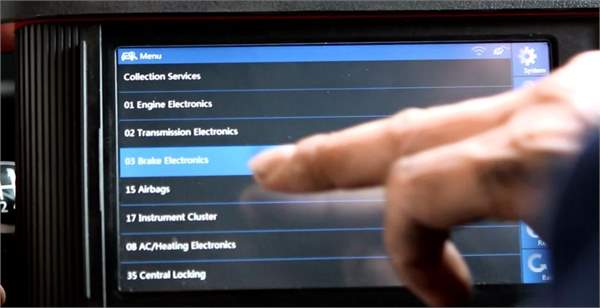
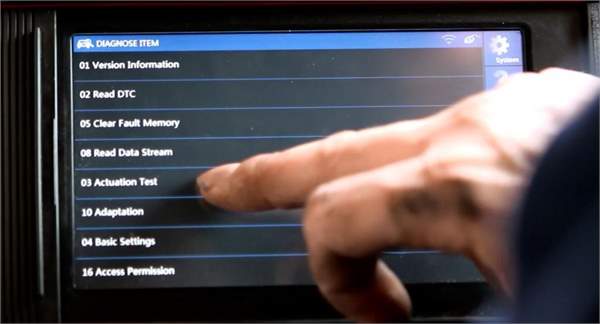
Next select 'Actuation Test' Then select 'OK' to 'Perform Output Tests' then 'Start' to activate the ABS pump. You'll hear the ABS pump kick in, the ABS light on the cars' dashboard will flash and you'll see an 'In Process' message on Launch
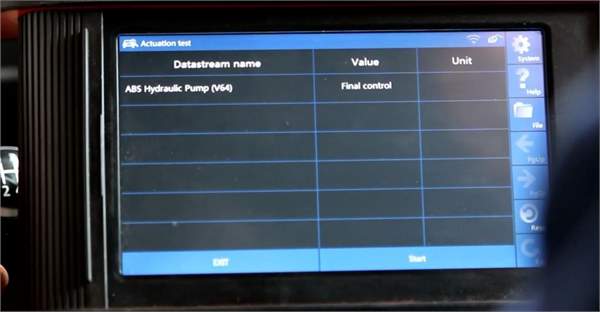
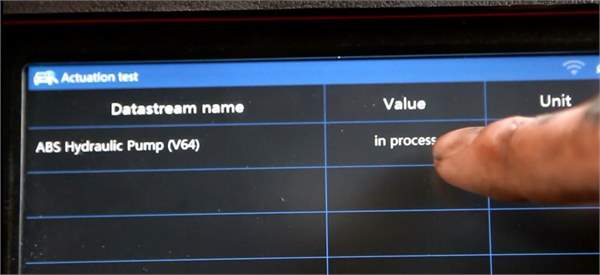
With the pump running, apply gentle pressure to the brake pedal and get your helper to bleed the brakes in sequence (front left, front right, rear left, rear right) As the bleed nipple on each caliper is opened and fluid flows out, the brake pedal will start to depress. Before the pedal gets to the floor, close the bleed nipple. With the bleed nipple closed release the brake pedal. Re-apply pressure to the brake pedal and re-open the bleed nipple. Repeat the process until the fluid flows clean and free from air bubbles. It's important not to keep the bleed nipple open on the upstroke of the brake pedal as it can draw in air. You can stop and start the ABS pump using Launch and repeat the process for each caliper.
Step 8
With the system now completely bled and free of air bubbles it's time to start putting everything back together. If you've been using a pressurised brake bleeder like we have, you'll need to siphon off excess brake fluid from the master cylinder using a turkey baster so that the level reads between the min & max marks on the reservoir. Replace the reservoir cap, replace all the bleed nipple dust covers, replace the road wheels and torque to 120Nm
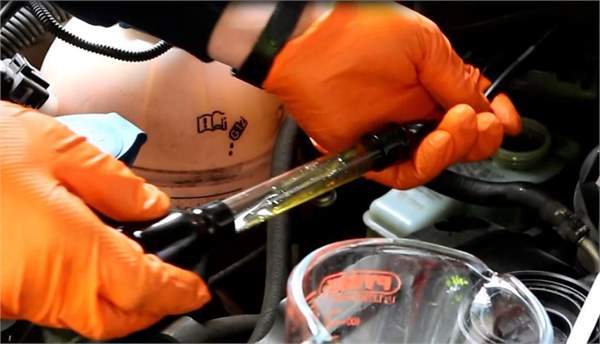 Step 9
Step 9
Test the brakes in a safe, controlled environment and as part of the test procedure make sure the ABS functions correctly. If the brake pedal feels soft or spongy you probably still have air trapped in the system and will need to repeat the process.
Want to read more project GTi articles?
Click here! or if you're shopping for brake discs & pads you might be interested in our
buying guide